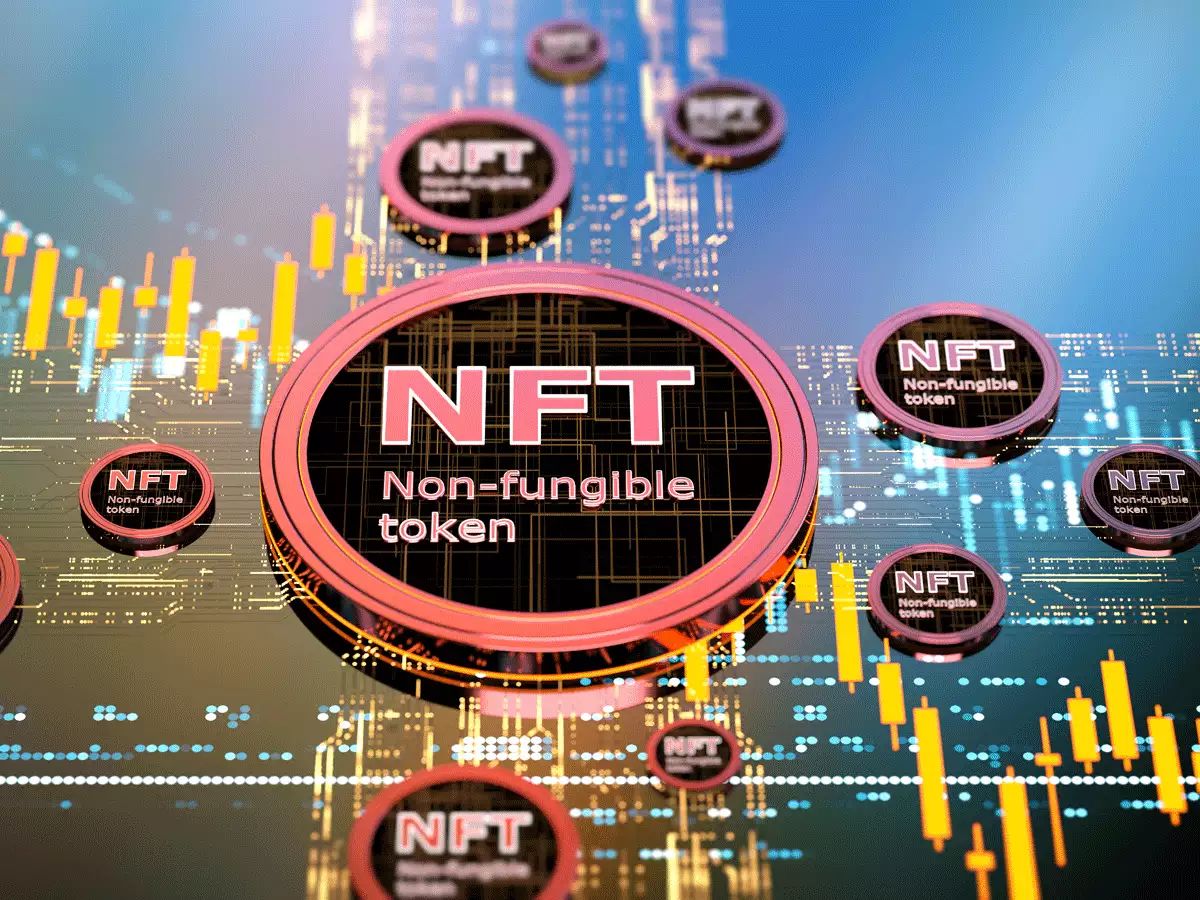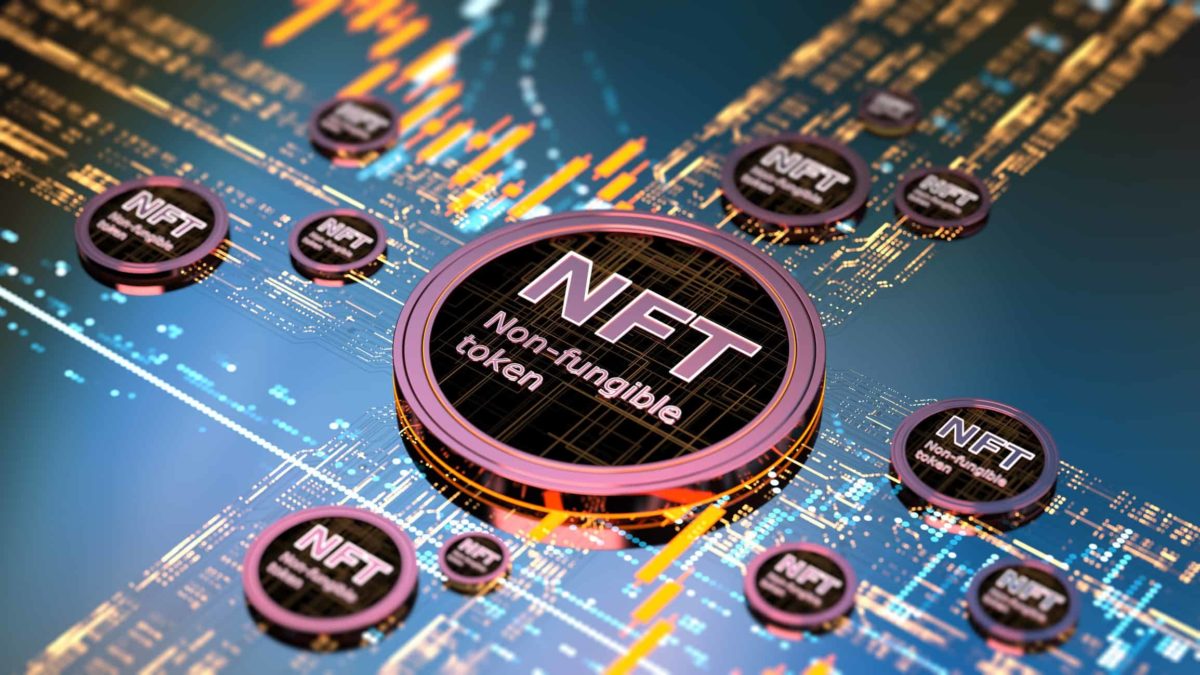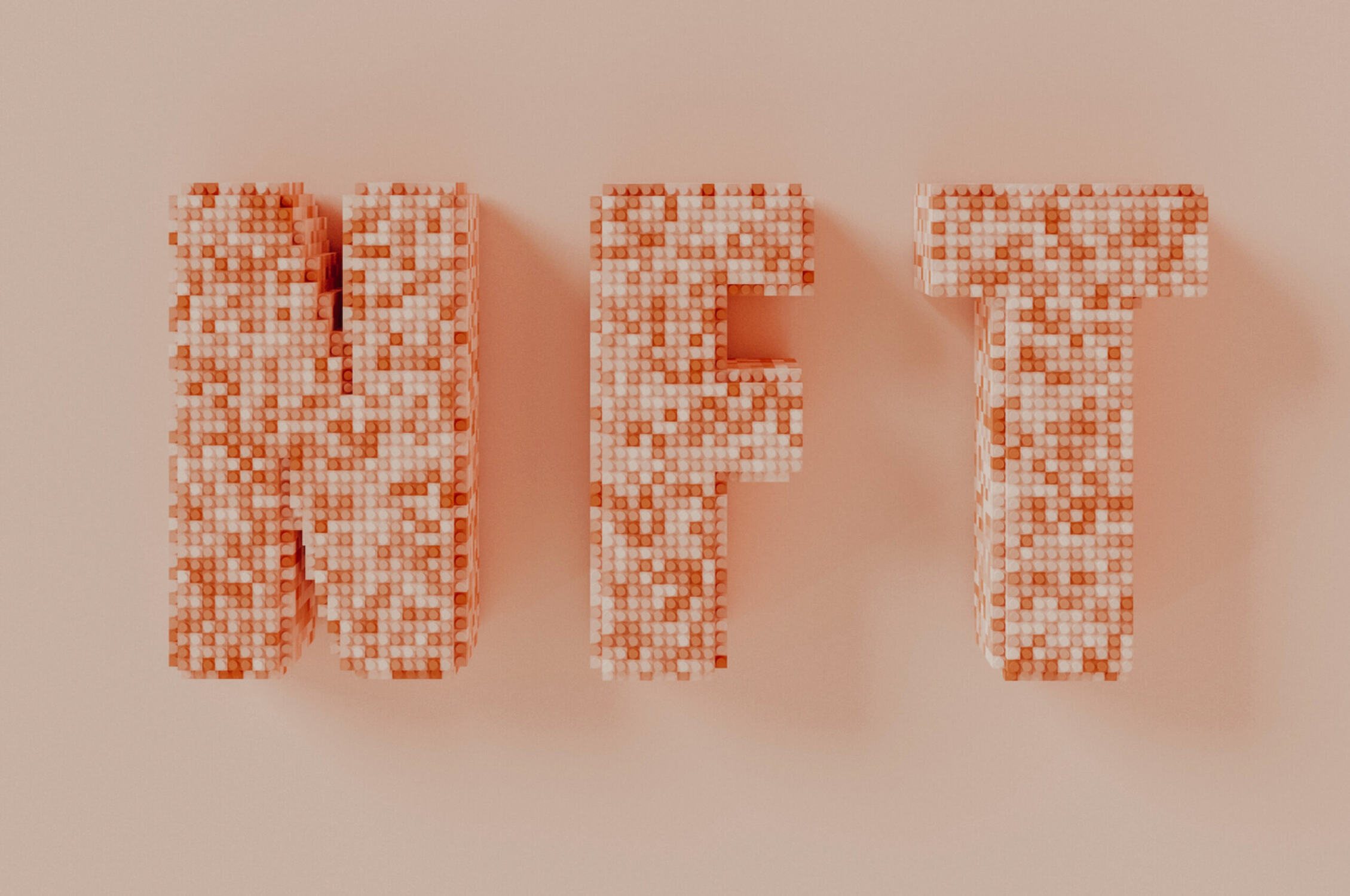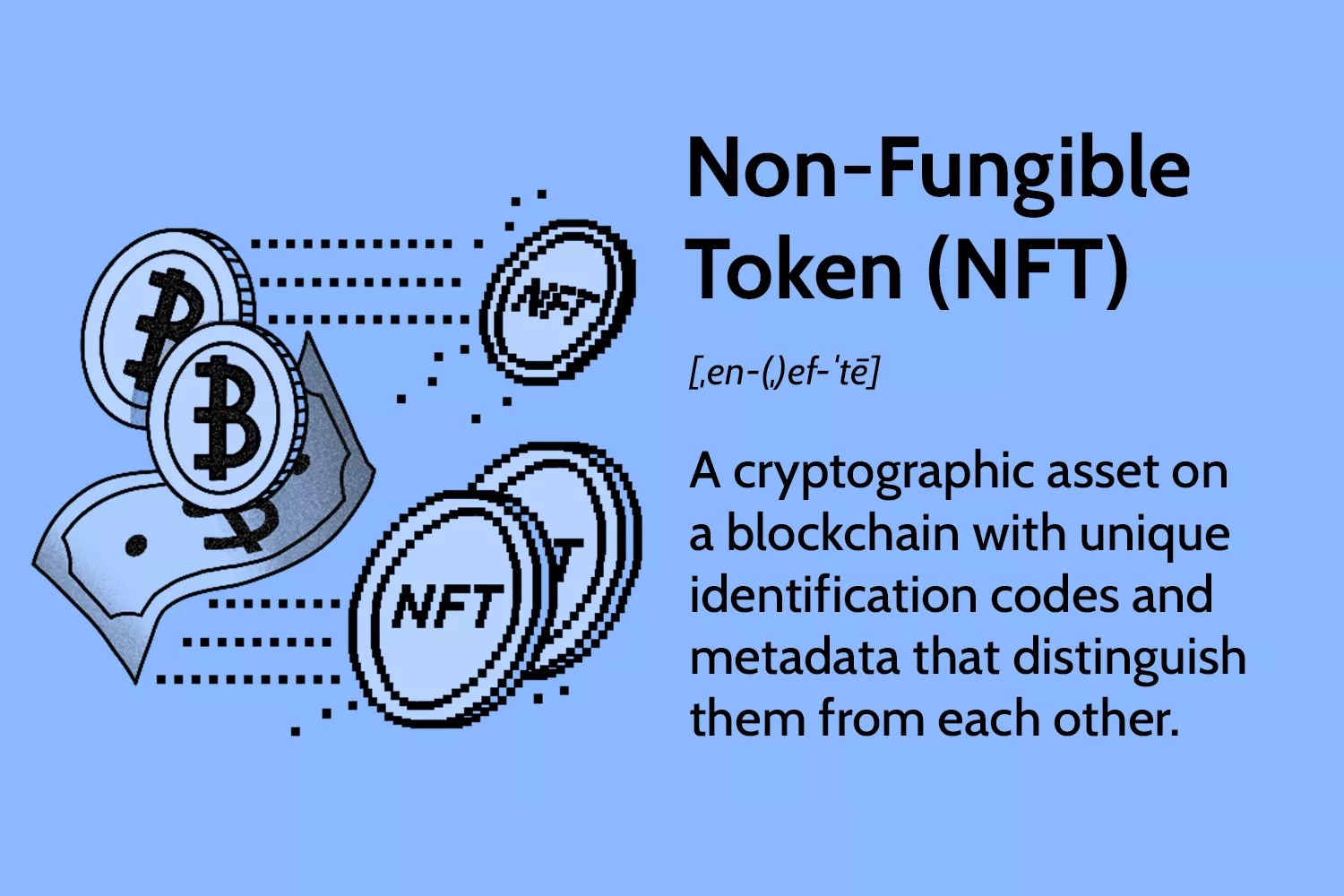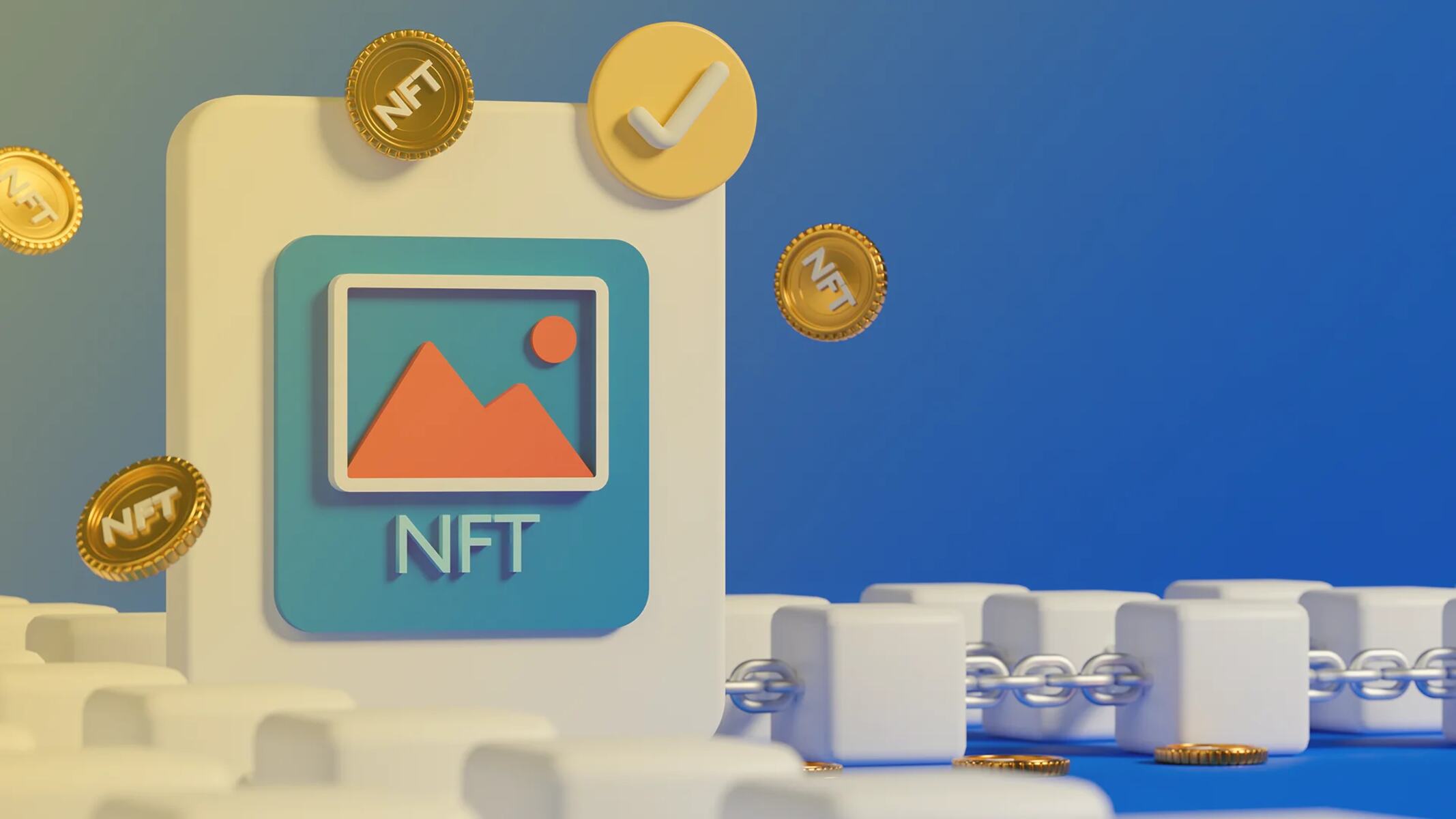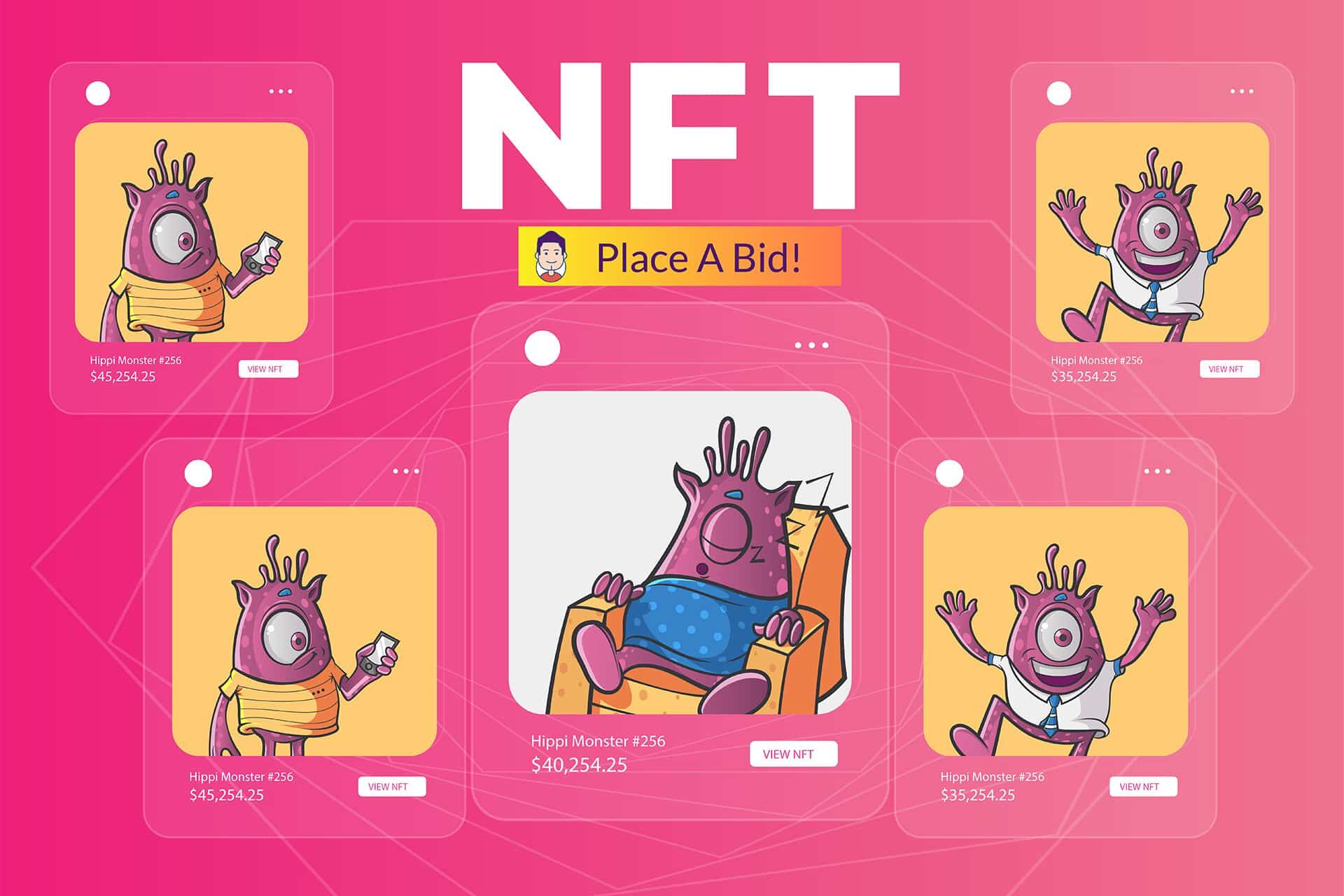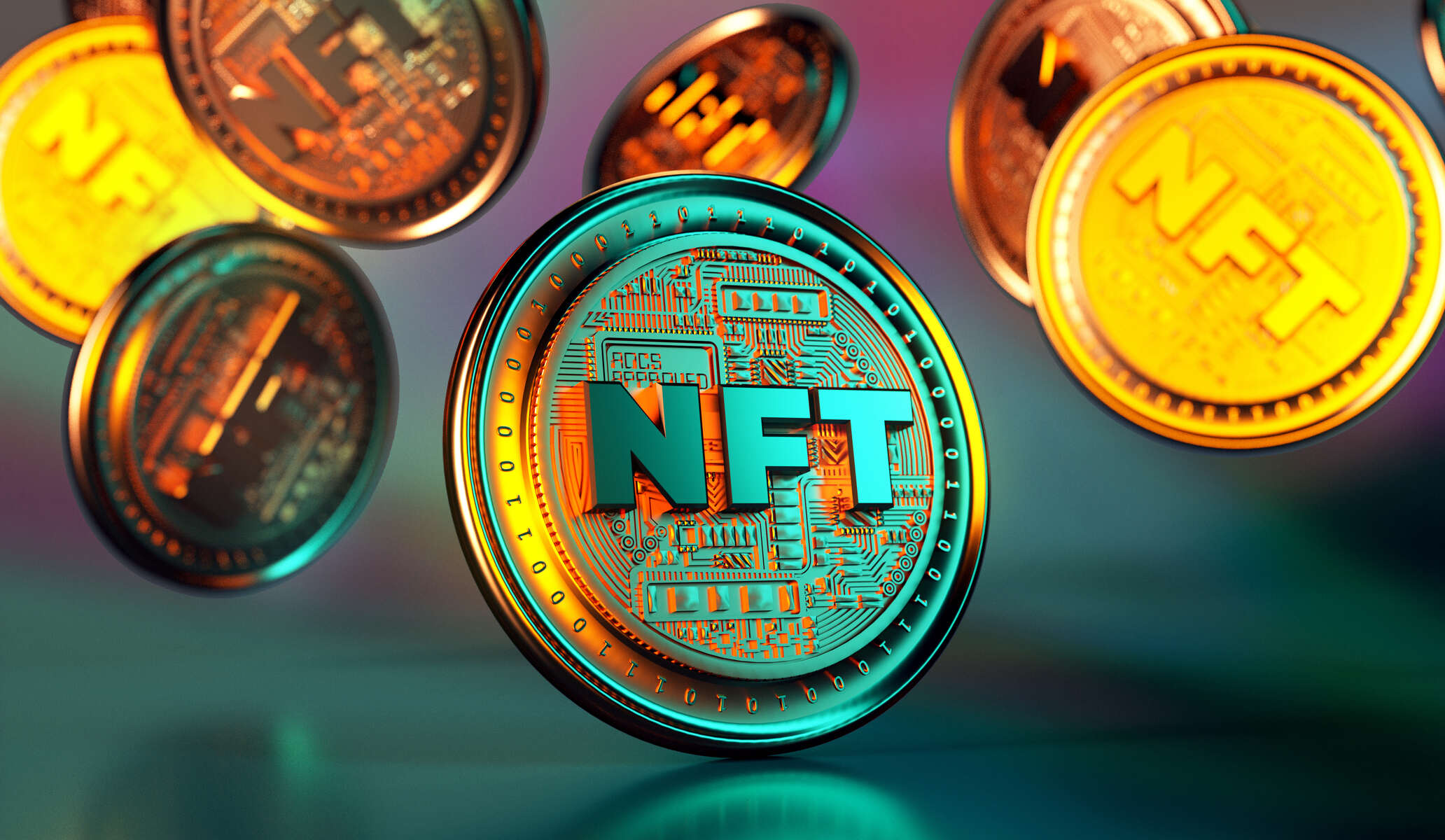Introduction
NFTs, or non-fungible tokens, have taken the digital world by storm. These unique digital assets have revolutionized the way we think about ownership and authenticity in the digital space. From digital artwork to virtual real estate, NFTs have opened up a whole new realm of possibilities for creators and collectors alike.
But have you ever wondered where NFTs exist and how they are authenticated? The answer lies in blockchain technology. Blockchain serves as the underlying foundation for NFTs, providing the necessary infrastructure for their creation, verification, and ownership.
In this article, we will delve into the world of NFTs and explore the blockchains on which they reside. We will discuss the primary blockchain for NFTs, Ethereum, as well as emerging alternative blockchains that have gained traction in the NFT marketplace.
By understanding the role of blockchain in the NFT ecosystem, you will gain valuable insights into the mechanisms that power this exciting and rapidly evolving space.
So, if you’re curious to know which blockchain NFTs are on and how they operate within this framework, let’s dive in!
Understanding NFTs
Before we explore the blockchain foundations of NFTs, it’s essential to have a clear understanding of what NFTs are and how they differ from traditional digital assets.
Unlike cryptocurrencies such as Bitcoin or Ethereum, which are fungible and can be exchanged on a one-to-one basis, NFTs are unique and indivisible. Each NFT is distinct, representing a specific piece of digital content, whether it’s artwork, music, videos, or virtual items.
One of the key features of NFTs is their ability to provide verifiable proof of ownership and provenance using blockchain technology. Every transaction and ownership transfer of an NFT is recorded on the blockchain ledger, ensuring transparency and immutability.
Additionally, NFTs can include smart contracts, which are self-executing digital agreements that automatically enforce the terms and conditions of the transaction. These smart contracts enable creators to earn royalties each time their NFT is resold, providing them with ongoing revenue opportunities.
Furthermore, NFTs have introduced new possibilities for digital creators and artists to monetize their work. By tokenizing their creations as NFTs, artists can establish scarcity and exclusivity, as each NFT represents a limited edition or one-of-a-kind item. This concept has opened up a new market for digital art and collectibles, allowing artists to connect directly with their audience and bypass traditional art market intermediaries.
As the popularity of NFTs continues to rise, it’s important to recognize that they embody both the digital and physical worlds. While the content of an NFT is intangible, its representation and associated value extend beyond the digital realm. Owning an NFT can provide a sense of uniqueness, ownership, and even bragging rights.
Now that we have established a foundational understanding of NFTs, let’s explore the role of blockchain technology in supporting and validating these digital assets.
What is a blockchain?
At its core, a blockchain is a decentralized and transparent digital ledger that records and validates transactions across multiple computers, known as nodes. Each transaction is securely added to a “block,” which is then linked to previous blocks, creating a chronological chain of information.
One of the key advantages of blockchain technology is its immutability. Once a transaction is recorded on the blockchain, it cannot be altered or tampered with, ensuring data integrity and trust. This makes it an ideal solution for applications that require transparency and security.
Blockchains function through a consensus mechanism, where the nodes within the network agree on the validity of each transaction. This consensus is typically achieved through methods such as proof of work (PoW) or proof of stake (PoS). PoW involves solving complex mathematical puzzles to validate transactions, while PoS relies on participants holding a certain amount of cryptocurrency to have the right to validate transactions.
In the context of NFTs, blockchain serves as a digital infrastructure that verifies and validates the unique ownership of these digital assets. The blockchain ensures that each NFT has a transparent and verifiable history of ownership, giving buyers confidence in the authenticity and provenance of the NFTs they acquire.
Additionally, blockchain technology enables peer-to-peer transactions without the need for intermediaries, such as banks or centralized authorities. This decentralization eliminates the need for trust in a single entity and empowers individuals to engage in direct and secure transactions.
Beyond NFTs, blockchain has found applications in various industries, including finance, supply chain management, healthcare, and more. Its ability to enhance security, transparency, and efficiency has attracted widespread interest and adoption.
Now that we have a fundamental understanding of blockchain technology, let’s explore why NFTs utilize the blockchain and which specific blockchains they are built upon.
Why are NFTs on the blockchain?
NFTs rely on blockchain technology due to several key reasons that enhance their functionality, security, and legitimacy.
First and foremost, blockchain provides a transparent and immutable record of ownership for NFTs. By utilizing blockchain technology, NFTs can have a tamper-proof and publicly verifiable ownership history, which adds a layer of trust and authenticity to these digital assets. This feature is particularly crucial in the world of digital art, where proving the uniqueness and provenance of a piece is essential.
Secondly, the decentralized nature of blockchain eliminates the need for intermediaries, resulting in a more direct and efficient peer-to-peer marketplace for NFTs. Artists and creators can sell their NFTs directly to collectors without relying on traditional art galleries, auction houses, or brokers. This direct connection benefits both creators and buyers, as it facilitates faster transactions and reduces unnecessary fees and bureaucracy.
Moreover, blockchain technology provides a secure environment for storing and transferring NFTs. The decentralized nature of blockchain makes it highly resistant to hacking and fraud, as altering the data recorded on the blockchain would require significant computing power and consensus from the network’s nodes. This security feature gives collectors confidence that the NFTs they own cannot be tampered with or duplicated.
Another crucial aspect of blockchain technology is the ability to program smart contracts. Smart contracts embedded within NFTs allow creators to receive royalties and additional benefits whenever their NFTs are sold or traded in the future. This feature ensures that artists are compensated for their work even after the initial sale and fosters a more equitable ecosystem for creators.
Furthermore, blockchain technology enables interoperability among different platforms and marketplaces. Artists can create NFTs on one blockchain and still sell them on multiple platforms, providing greater accessibility and exposure for their work. This interoperability expands the reach and potential market for NFTs, benefiting both artists and collectors.
Overall, blockchain technology plays a vital role in the world of NFTs by providing transparency, security, direct ownership, and programmable features. By leveraging the power of blockchain, NFTs have gained credibility and opened up new possibilities for artists, collectors, and enthusiasts.
Now that we understand why NFTs utilize blockchain technology, let’s explore the specific blockchains that NFTs are built upon.
So, which blockchain are NFTs on?
The primary blockchain that has emerged as the go-to platform for NFTs is Ethereum. Ethereum’s robust smart contract functionality and established developer community have made it the preferred choice for creating, buying, and selling NFTs.
Ethereum’s blockchain allows for the creation of customizable and programmable NFTs using the ERC-721 and ERC-1155 token standards. These standards provide a framework for the creation and exchange of unique and fungible tokens, respectively.
However, Ethereum’s popularity and success in the NFT space have come with some significant drawbacks. The network’s scalability limitations have resulted in congestion and high transaction fees, making it less accessible for artists and collectors, particularly those involved in lower-value transactions.
Recognizing the need for alternative options, several blockchains have emerged as contenders for hosting NFTs. These alternative blockchains offer different features and advantages that cater to specific needs within the NFT ecosystem.
One such blockchain is Binance Smart Chain (BSC), which was created by the popular cryptocurrency exchange Binance. BSC offers faster and cheaper transactions compared to Ethereum, making it an appealing option for artists and collectors looking for a more cost-effective NFT marketplace.
Another blockchain gaining traction in the NFT space is the Flow blockchain, created by the team behind CryptoKitties. Flow is purpose-built for handling high volumes of NFT transactions and supporting complex applications. This scalability and developer-friendly design make it an attractive choice for large-scale NFT projects.
Polygon (formerly Matic) is yet another blockchain that has gained popularity as a layer 2 scaling solution for Ethereum. By utilizing Polygon, artists and collectors can enjoy faster and cheaper NFT transactions while still benefiting from the security and interoperability of the Ethereum network.
Tezos is a blockchain known for its focus on security and formal verification. Tezos allows for the creation of NFTs and provides a robust infrastructure for artists and collectors concerned about the integrity and security of their digital assets.
WAX Blockchain is specifically designed for the trading of digital collectibles and virtual items. It offers a user-friendly interface and cross-chain compatibility, enabling the seamless exchange of NFTs across multiple platforms.
These are just a few examples of the alternative blockchains that have gained prominence in the NFT space. Each blockchain offers its own set of features, advantages, and ecosystem, catering to the diverse needs and preferences of NFT creators and collectors.
It’s important for artists and collectors to consider their specific requirements, including transaction costs, speed, security, and community support, when deciding which blockchain to utilize for their NFT endeavors.
Now that we have examined some of the leading blockchains for NFTs, let’s explore each of these platforms in more detail to better understand their unique features and offerings.
Ethereum
Ethereum is the pioneering blockchain that has become synonymous with the NFT ecosystem. Its robust smart contract functionality, decentralized nature, and vast developer community have made it the primary choice for creating and trading NFTs.
As the first blockchain to introduce the concept of smart contracts, Ethereum allows for the creation of customizable and programmable NFTs. The ERC-721 and ERC-1155 token standards, specifically developed for non-fungible tokens, provide a framework for the creation, ownership, and transfer of unique digital assets.
Ethereum’s prominence in the NFT space has resulted in the development of various NFT marketplaces, such as OpenSea, Rarible, and SuperRare. These platforms offer a wide range of NFTs, including art, collectibles, and virtual real estate, and provide a marketplace for artists and collectors to buy, sell, and trade NFTs.
However, Ethereum’s success has come with some challenges, most notably scalability. The network’s popularity has led to congestion and high transaction fees, which can present barriers for smaller-scale artists and collectors. These scalability limitations have prompted the exploration of alternative blockchains to alleviate these issues while maintaining the benefits of Ethereum’s smart contract functionality.
Despite these challenges, Ethereum remains a leader in the NFT space, with many high-profile artists, musicians, and celebrities embracing the platform to tokenize and sell their digital creations. The ongoing development of Ethereum 2.0, an upgrade aimed at improving scalability and energy efficiency, holds promise for a more sustainable and accessible NFT ecosystem on the Ethereum blockchain.
In summary, Ethereum has been the foundation of the NFT revolution, offering a powerful platform for the creation, trading, and ownership of unique digital assets. Its smart contract functionality and established ecosystem have positioned it as the preferred blockchain for NFTs, although scalability limitations have prompted the exploration of alternative options.
The Rise of Alternative Blockchains
As the popularity of NFTs continues to grow, so does the demand for alternative blockchains that can address the limitations and scalability issues of Ethereum. These emerging blockchains offer unique features and advantages that cater to specific needs within the NFT ecosystem. Let’s explore some of these alternatives:
Binance Smart Chain (BSC): Created by the prominent cryptocurrency exchange Binance, BSC offers faster and cheaper transactions compared to Ethereum. It leverages a proof-of-stake consensus algorithm, enabling artists and collectors to engage in NFT transactions without incurring high fees and network congestion.
Flow Blockchain: Developed by the team behind CryptoKitties, Flow is purpose-built to handle high volumes of NFT transactions and enable complex applications. Flow’s architecture supports fast and scalable decentralized applications, making it an attractive option for NFT projects with large communities and high transaction volumes.
Polygon (formerly Matic): Positioned as a layer 2 scaling solution for Ethereum, Polygon provides an off-chain infrastructure that enhances scalability and reduces transaction costs. By utilizing Polygon, artists and collectors can enjoy faster and cheaper NFT transactions while still benefiting from the security and interoperability of the Ethereum network.
Tezos: Known for its focus on security and formal verification, Tezos offers a secure and developer-friendly environment for NFTs. Tezos’ on-chain governance model allows for protocol upgrades and enhancements without requiring hard forks, providing a stable and flexible platform for artists and collectors to engage in NFT transactions.
WAX Blockchain: Designed specifically for the trading of digital collectibles and virtual items, WAX Blockchain offers a user-friendly interface and cross-chain compatibility. It enables seamless exchange and trading of NFTs across multiple platforms, enhancing accessibility and liquidity in the NFT marketplace.
These alternative blockchains have gained prominence by addressing some of the scalability, cost, and usability challenges that artists and collectors face when utilizing Ethereum for NFT transactions. They provide options for diverse needs, making the NFT space more inclusive and accommodating to various budgets and preferences.
It’s important for artists and collectors to carefully consider the characteristics and offerings of these alternative blockchains before deciding which platform aligns best with their needs and objectives. As the NFT ecosystem continues to evolve, we can expect further advancements, innovations, and new players entering the market, leading to a more diverse and robust landscape of NFT blockchains.
Binance Smart Chain
Binance Smart Chain (BSC) has emerged as one of the leading alternatives to Ethereum for hosting NFTs. Developed by the well-known cryptocurrency exchange Binance, BSC offers a scalable and cost-effective blockchain solution for artists and collectors to engage in NFT transactions.
One of the key advantages of BSC is its ability to provide faster and cheaper transactions compared to Ethereum. BSC utilizes a proof-of-stake consensus algorithm, which reduces network congestion and minimizes transaction fees. This makes it an attractive option for artists and collectors looking for a more accessible and affordable NFT marketplace.
BSC has established itself as a developer-friendly platform, with a growing ecosystem of tools, libraries, and frameworks to support the creation and deployment of NFTs. It also offers compatibility with Ethereum Virtual Machine (EVM), allowing developers to leverage their existing Ethereum smart contracts on the BSC network.
With BSC, artists have the opportunity to tokenize their digital artwork, music, videos, and more as unique NFTs. They can create limited editions or one-of-a-kind pieces, establishing scarcity and exclusivity to attract collectors. Additionally, BSC allows artists to earn royalties on secondary sales, ensuring ongoing revenue streams from their NFTs.
For collectors, BSC offers a wide range of NFT marketplaces and platforms to explore and discover new artworks, collectibles, and virtual items. Artists and collectors can engage in direct peer-to-peer transactions without the need for intermediaries, providing a more seamless and efficient marketplace experience.
Furthermore, BSC provides a user-friendly interface, making it accessible to both experienced crypto enthusiasts and newcomers to the NFT space. The ease of use and affordability of BSC have contributed to its increasing popularity among artists and collectors seeking an alternative blockchain for their NFT transactions.
In summary, Binance Smart Chain has become a prominent choice for hosting NFTs due to its scalability, affordability, and developer-friendly environment. With faster and cheaper transactions, BSC has provided artists and collectors with a viable alternative to Ethereum, offering a diverse ecosystem of NFTs and marketplaces. As the NFT space continues to expand, BSC and other alternative blockchains are likely to play a significant role in shaping the future of digital ownership and creative expression.
Flow Blockchain
Flow Blockchain has gained recognition as a prominent blockchain for hosting and trading NFTs. Developed by the team behind the popular CryptoKitties game, Flow offers a scalable and developer-friendly platform tailored for handling high volumes of NFT transactions and complex applications.
One of the key advantages of Flow is its architecture, designed specifically for NFTs and decentralized applications (dApps). Flow utilizes a unique hybrid consensus mechanism that combines elements of Proof-of-Stake (PoS) and HotStuff, enabling high-speed consensus and throughput. This design ensures faster transaction processing, scalability, and improved user experience for artists and collectors engaging in NFT transactions.
Flow’s blockchain technology supports the creation and trading of NFTs, providing a secure and transparent environment for digital artists and creators to tokenize and sell their artwork, music, collectibles, and more. The platform offers a smart contract framework specifically tailored for NFTs, allowing for the creation of unique digital assets and establishing provable scarcity.
Flow’s focus on user experience and simplicity is manifested through its user-friendly interface. The platform aims to cater to both crypto enthusiasts and mainstream users, providing an accessible and intuitive marketplace for artists and collectors to engage in NFT transactions.
Furthermore, Flow has garnered significant partnerships with notable brands and franchises, including the NBA and major entertainment companies. These partnerships have resulted in the launch of high-profile NFT projects, such as NBA Top Shot, where fans can collect and trade official digital NBA highlights.
The success of NBA Top Shot showcases the unique capabilities of Flow, offering a seamless and interactive experience for collectors to own and showcase their digital collections. Flow’s focus on entertainment and cultural applications further solidifies its position as a leading blockchain for NFTs in the mainstream space.
Developers are also drawn to Flow’s infrastructure due to its comprehensive developer tools and resources. Flow provides an extensive software development kit (SDK), enabling developers to build and deploy NFT dApps with ease. This developer-friendly environment fosters innovation and encourages the creation of unique and engaging NFT experiences.
In summary, Flow Blockchain has gained recognition as a scalable and developer-friendly platform for NFTs. Its unique architecture, user-friendly interface, and strategic partnerships have positioned it as a leading choice for artists, collectors, and developers seeking an optimal environment for NFT creation, trading, and user engagement. As the NFT ecosystem continues to expand, Flow is likely to play a significant role in shaping the future of digital ownership and the mainstream adoption of NFTs.
Polygon (formerly Matic)
Polygon, previously known as Matic Network, has emerged as a popular layer 2 scaling solution for Ethereum, offering a fast and cost-effective platform for hosting NFTs. Polygon addresses the scalability and transaction fee challenges associated with the Ethereum network, providing a scalable and efficient infrastructure for NFT transactions.
As a layer 2 solution, Polygon utilizes sidechains and a modified version of Ethereum’s Plasma framework to process and settle transactions off-chain. By doing so, Polygon significantly reduces transaction costs and improves transaction speeds, making it an attractive alternative for artists and collectors seeking a more accessible NFT marketplace.
Polygon is fully compatible with Ethereum, providing seamless integration with the Ethereum Virtual Machine (EVM). This compatibility allows artists and developers to leverage their existing Ethereum smart contracts and tools on the Polygon network, making it easier for them to migrate their NFT projects to Polygon.
By utilizing Polygon, artists and collectors can enjoy faster transaction confirmations and significantly lower fees compared to the Ethereum mainnet. This scalability and cost-effectiveness democratize access to the NFT space, enabling smaller-scale artists and collectors to participate and thrive in the digital art and collectibles market.
Polygon’s commitment to providing a robust and secure infrastructure is further highlighted by its growing ecosystem and partnerships. The platform has attracted numerous NFT marketplaces, gaming platforms, and decentralized applications. This diverse ecosystem offers a wide range of NFTs, ensuring a vibrant and dynamic marketplace for artists and collectors on Polygon.
Additionally, Polygon’s commitment to sustainability is evident through its eco-friendly consensus mechanism. The platform utilizes a proof-of-stake (PoS) mechanism, reducing its carbon footprint compared to Proof-of-Work (PoW) blockchains like Ethereum. This feature aligns with the growing environmental concerns surrounding blockchain technology and demonstrates Polygon’s dedication to building a sustainable ecosystem.
Furthermore, Polygon aims to bridge different blockchains and enable interoperability. The platform has introduced the Polygon Bridge, which allows for the seamless transfer of assets between Ethereum and Polygon. This interoperability expands the possibilities for artists and collectors, enabling the movement and interaction of NFTs across different blockchain networks.
In summary, Polygon (formerly Matic) has established itself as a scalable and cost-effective layer 2 solution for hosting NFTs. By addressing the scalability and cost limitations of Ethereum, Polygon provides artists and collectors with faster transaction confirmations and lower fees, making NFTs more accessible to a wider audience. With its focus on compatibility, security, and sustainability, Polygon has emerged as a significant player in the evolving NFT space.
Tezos
Tezos is a blockchain platform known for its emphasis on security, formal verification, and on-chain governance. Its unique features make it an appealing choice for artists and collectors looking for a secure and reliable infrastructure to host their NFTs.
One of the key advantages of Tezos is its focus on security and formal verification. Formal verification is a process through which the correctness of smart contracts is mathematically proven, reducing the risk of vulnerabilities and bugs. This feature provides artists and collectors with confidence in the integrity and security of their NFTs.
In addition to security, Tezos offers on-chain governance, allowing stakeholders to participate in the decision-making process and protocol upgrades. This governance model promotes transparency and decentralization, as participants can propose and vote on improvements to the Tezos network. Artists and collectors can actively participate in shaping the future of the NFT ecosystem on Tezos.
Tezos provides a developer-friendly environment with comprehensive tools and resources for creating and deploying NFTs. The platform supports a range of programming languages, making it accessible to developers with different coding backgrounds. This versatility enables artists and developers to bring their unique creations to life on the Tezos blockchain.
As an energy-efficient blockchain, Tezos also addresses the growing environmental concerns associated with blockchain technology. Its proof-of-stake consensus mechanism consumes significantly less energy compared to proof-of-work blockchains, such as Ethereum. This eco-friendly approach aligns with the increasing importance of sustainability in the NFT space.
Tezos has seen the emergence of various NFT projects and marketplaces, allowing artists to showcase and sell their digital artworks, collectibles, and virtual assets. These marketplaces take advantage of Tezos’ security features, on-chain governance, and developer-friendly infrastructure to provide a seamless experience for artists and collectors.
Moreover, Tezos boasts cross-chain compatibility with other popular blockchains, enabling the transfer of assets and NFTs across different networks. This interoperability expands the possibilities for artists and collectors, allowing them to engage with a broader ecosystem and bridge various blockchain communities.
In summary, Tezos offers a secure and developer-friendly platform for hosting NFTs. With its focus on security, formal verification, on-chain governance, and cross-chain compatibility, Tezos provides a robust infrastructure and a collaborative ecosystem for artists and collectors. As the NFT landscape continues to evolve, Tezos is positioned to play a significant role in fostering a secure and decentralized environment for digital ownership and creative expression.
WAX Blockchain
WAX Blockchain has gained recognition as a specialized blockchain designed specifically for the trading of digital collectibles and virtual items. With its focus on usability, cross-chain compatibility, and user-friendly interface, WAX offers a seamless and efficient platform for artists and collectors to engage in NFT transactions.
WAX Blockchain provides a user-friendly environment that caters to both crypto enthusiasts and mainstream users. The platform offers a simple and intuitive interface, making it easy for artists to tokenize their digital assets and collectors to browse and purchase NFTs. This accessibility encourages wider adoption in the NFT space.
One of the notable features of WAX is its cross-chain compatibility. WAX allows for the seamless exchange and trading of NFTs across multiple blockchain networks, providing greater liquidity and accessibility for artists and collectors. This interconnectivity expands the reach and potential market for NFTs, enabling individuals to explore and interact with a broader ecosystem of digital collectibles.
WAX’s focus on digital collectibles and virtual items has attracted partnerships with various brands, franchises, and gaming companies. These collaborations result in the creation of NFTs that represent unique assets, such as limited edition digital artwork, in-game items, and virtual real estate. The presence of recognized brands contributes to the authenticity and desirability of the NFTs available on the WAX platform.
Security is a top priority for the WAX Blockchain. The platform implements various security measures, including atomic swaps and non-custodial wallet solutions, to ensure the safe storage and transfer of NFTs. By prioritizing secure infrastructure, WAX aims to protect the digital assets and intellectual property rights of artists and collectors.
Furthermore, WAX offers features that enable the smooth integration of NFTs into social media and e-commerce channels. Through partnerships and collaborations, WAX facilitates the seamless embedding and display of NFTs on websites, social media platforms, and marketplaces, enhancing the visibility and discoverability of these digital assets.
WAX has established itself as a vibrant marketplace for digital collectibles, attracting both artists and collectors from around the world. With its user-friendly interface, cross-chain compatibility, and focus on digital collectibles and virtual items, WAX Blockchain provides a unique and inclusive environment for artists to monetize their creations and collectors to explore and trade NFTs.
In summary, WAX Blockchain offers a user-friendly and secure platform for the trading of digital collectibles and virtual items. Its cross-chain compatibility, focus on digital collectibles, and partnerships with brands contribute to its popularity among artists and collectors. With its commitment to accessibility, usability, and security, WAX Blockchain has become a significant player in the evolving NFT landscape, empowering artists and collectors to participate in the digital ownership revolution.
Conclusion
The world of NFTs has brought about a paradigm shift in the digital economy, redefining how we perceive and exchange digital assets. Blockchain technology serves as the essential underlying infrastructure that enables the creation, verification, and ownership of these unique digital assets.
Ethereum, with its smart contract functionality, established itself as the primary blockchain for NFTs. It offers a robust ecosystem and a wide range of marketplaces for artists and collectors to create, buy, and sell NFTs. However, the scalability limitations and high transaction fees of Ethereum have led to the rise of alternative blockchains that address these challenges.
Blockchain platforms like Binance Smart Chain, Flow, Polygon, Tezos, and WAX have emerged as viable options for hosting NFTs. These blockchains provide various advantages such as faster transaction times, lower fees, enhanced security, formal verification, and user-friendly interfaces.
The availability of multiple blockchain options offers artists and collectors the flexibility to choose the platform that best suits their needs, whether it’s affordability, scalability, security, or ease of use.
It is important for artists and collectors to carefully evaluate the features and characteristics of each blockchain, considering factors such as transaction costs, speed, security, and ecosystem support before deciding where to host their NFTs.
As the NFT ecosystem continues to evolve, we can anticipate more advancements and innovations in blockchain technology. New platforms may emerge, offering even more tailored solutions to meet the demands of artists, collectors, and enthusiasts.
Regardless of the blockchain chosen, one thing remains certain: NFTs have ushered in a new era of digital ownership, providing artists with new avenues for monetization and collectors with unique opportunities to own and trade digital assets like never before.
As we continue to witness the growth of the NFT space, it is worth acknowledging the transformative power of blockchain technology and its role in shaping the future of digital ownership, creativity, and the intersection of art and technology.







